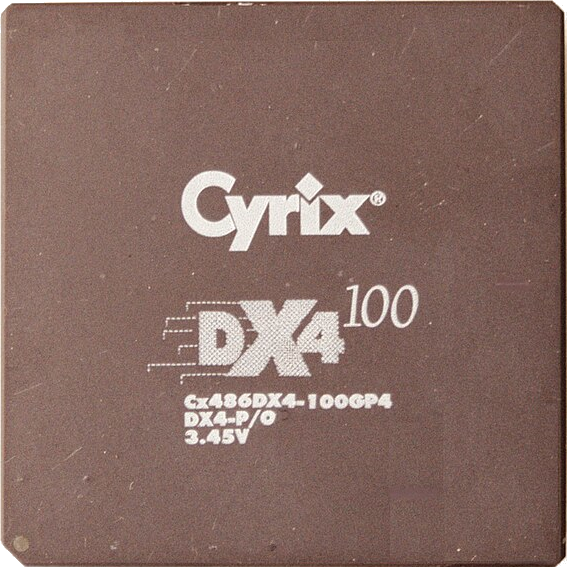Here is the past network setup:
- Main Router (192.168.1.2) -> Ethernet Switch -> Multiple Ethernet cables connected to wall
- Wall -> Second Router (192.168.1.1)
- Wall -> PC
After a blackout we thought the switch was no longer working so we replaced it with another router. The problem is the router has too few ports, not every room gets ethernet. The ethernet switch works in this configuration:
- Main Router -> Third Router (Wi-Fi disabled) -> Ethernet cable connected to wall -> Wall -> Ethernet Splitter -> PC Under either of these configurations PC detects network but cannot reach 192.168.1.1, 192.168.1.2 or WWW:
- Main Router -> Ethernet Switch -> PC
- Main Router -> Ethernet Switch -> Ethernet cable connected to wall -> Wall -> PC
Windows reports “Unidentified network”, Linux tries to connect for a minute then fails. I knwo the PC isn’t bad because other devices also fail to connect. Even if I set up a static IP I cannot reach a local IP. 2nd router has IP address 192.168.1.1 because it refuses to use anything else, first router is assigned different IP so these two don’t conflict.
Update: For testing I removed router 2, (the one I use as an extender / wireless AP) set router 1’s IP address to 192.168.1.1. I tried connecting Router 1 to Router 3 (with DHCP disabled) and Router 3 (used as a switch) to PC via cables. It worked. Then I replaced Router 3 with the switch, network detected but no Internet. So even with the simplest possible setup and one DHCP server I had no network.
My original problem was Router 3 had too few ports and not all rooms got Ethernet access. Router 3 is above Router 1 and connects to cables coming out from the wall that provide Ethernet to rooms. I recalled that WAN cable of Router 1 is too short so I cannot lift it to connect to cables, turns out that’s not the case. So I lifted Router 1 and I could connect a cable to provide Ethernet for one more room which is what I needed. Routers 1 are 3 are held mid air with Ethernet cables.
I previously mentioned that the switch works if it is connected to a wall plug in a room and it still works that way. Anyways here is the final setup:

This is really more of a home networking issue than anything having to do with self-hosting. Please consider posting this in one of the many Lemmy home networking communities.
You have three routers? Why?
Throw 2 of them out and get actual switches.
2nd router is used as a wireless AP, getting rid of 3rd router is exactly what I am trying to do.
Just to make sure you know this, routers are not switches. You might get some of them to sort behave like switches with careful configuration, but most of the time it’s asking for a lot of trouble.
Well, routers CAN be switches. OP is just not using them in the right way.
That’s highly dependent on the hardware. My router only has two ports.
No, just means they need to set the correct move.
Are you sure there is exactly one DHCP server running?
I was thinking the same. Could be an IP conflict.
First router has DHCP enabled with range 192.168.1.20 to 192.168.1.80. Second one has “DHCP Relay” enabled with relay server set to 192.168.1.2. Third router has DHCP disabled.
Try diasbling the second DHCP server altogether. You only need one, since you have a flat network.
That’s not how DHCP relays work.
Might be conflicts due to several routers using the same subnet… could cause some interesting ARP issues for the switches, and also DHCP conflicts if something is wrongly cabled / configured.
I would try disconnecting everything from after the first switch, connect a computer there to see if it works ok, then reconnect and test behind each step to see where it breaks instead of checking in the end where the problem could be agitated from a issue earlier in the network…
also, if the router has a firewall/nat you will not be able to reach anything behind it, even if there are different subnets being used… to be able to reach devices behind a router, the network would need to be routed and not nat’ed as nat combines all network traffic into the IP of the router before sending the traffic away, so clients on the other side has no way of knowing who or where the traffic came from after the nat’ed router.
I suggest you read up about this if you are not familiar with difference between NAT and routed traffic.
anyway, this is just my theory, hope you find your problem and get it sorted :)
(edit added part about nat)
replying to myself here, but also, if this where supposed to work, which I doubt it will because it’s not feasible with tcpip, your second router would need to have the first router as gateway, but that is not possible when they are on the same subnet, and also your router will most likely not allow it because nat/routing will break, but if this was possible, devices behind your second router would not be able to connect to the devices before and vice versa, because since they have the same subnet, the traffic is considered local and not going through the router, and therefore the will not see each other as the NAT provides a separation between the networks…
you cannot use a router as a switch without using routing and different subnets … so … you might want to reconsider your design
also, what ports on both routers are connected? are they both using “WAN” for their uplink?
WAN and LAN1 ports on router 1 is used. LAN3,4,5,6 and Uplink ports are connected on the switch. (model is Uptech SW-116) Uplink is connected to LAN1 on router 1. Other connections go to wall. I disconnected other routers, problem persists.
Acronyms, initialisms, abbreviations, contractions, and other phrases which expand to something larger, that I’ve seen in this thread:
Fewer Letters More Letters AP WiFi Access Point ARP Address Resolution Protocol, translates IPs to MAC addresses DHCP Dynamic Host Configuration Protocol, automates assignment of IPs when connecting to a network IP Internet Protocol NAT Network Address Translation
5 acronyms in this thread; the most compressed thread commented on today has 5 acronyms.
[Thread #978 for this sub, first seen 18th Sep 2024, 08:15] [FAQ] [Full list] [Contact] [Source code]
As said look at DHCP clashes or " Wall -> Ethernet Splitter -> PC Under either"
What do you mean by this? The ones I know of will drop the connection to 10mb or 100mb and will on work on both “halves” at the same time*
- see comment by @Max_P
Ethernet splitter
What kind of splitter? Not a hub or switch, just a passive splitter?
Those do exist to do 4x 100M links on a single pair each, but you can’t just plug those into a router or switch and get 4 ports, it still needs to eventually terminate as 4 ports on both ends.
Model is Uptech SW-116, it has “Uplink” port and 16 LAN ports. It also uses external power.
Not sure if I am reading it correctly. But what ip adress is your given to your pc?
It reads to me like you have router 1 and 2 on router 1’s network but your pc is on router 2’s “internal” network… which must not be in the same 192.168.1.x range as is router 1’s network.
Put router 1 under 192.168.2.x range Then Then Router 2 with 192.168.1.x adressing should work still, and the pc should be able to talk to the router-1 network.
PC receives 192.168.1.37
I’m wondering if you have an incorrect gateway set or default route






